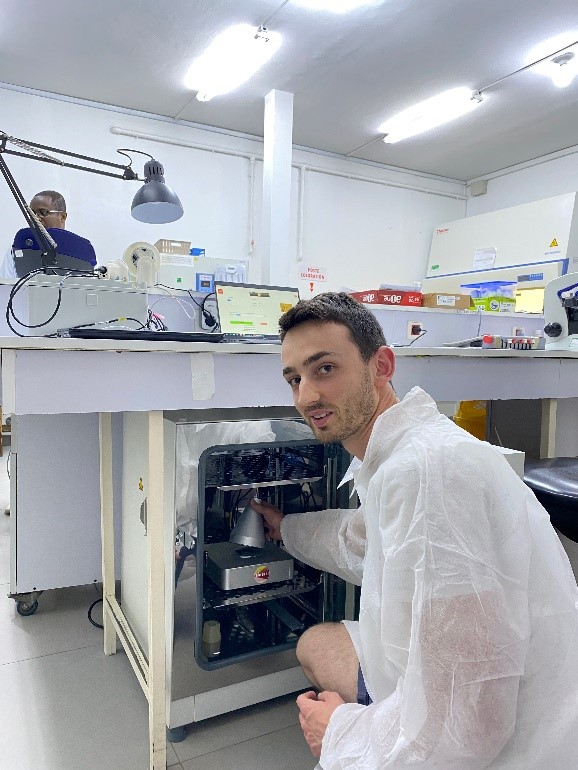The SINAPS team has developed a lensless optical sensor for recording images of bacterial colonies in a Petri dish. The device boasts high spatial resolution (equivalent to an X40 magnifying lens) and a field of observation of around ten square centimeters, corresponding to a field of view 50 to 100 times greater than that of an X40 lens.
This lens-free identification method offers a number of advantages: in just a few seconds, it can identify all colonies present in the field of view of the lens-free device up to 24x36 mm, in a non-destructive way. What's more, the device is compact and lightweight (it can be carried in a backpack). It is energy-efficient and can be easily integrated into a standard incubator.
The aim of the European SIMBLE project is to test low-cost bacteria identification technologies for developing countries. To this end, Dylan David (Pheliqs/SiNaPS) participated in the development of the instruments, and has just returned from Benin where he installed two devices: the first for a hospital in Cotonou, the second for a field hospital in Boko, 300 kilometers from the capital.
The images generated will be used to establish a database of bacterial colonies from patient samples. This database will then be used to train a pattern recognition algorithm (Deep Learning) to achieve an identification rate of over 95%.

Dylan put an imaging system in an incubator at Cotonou Hospital (Benin).